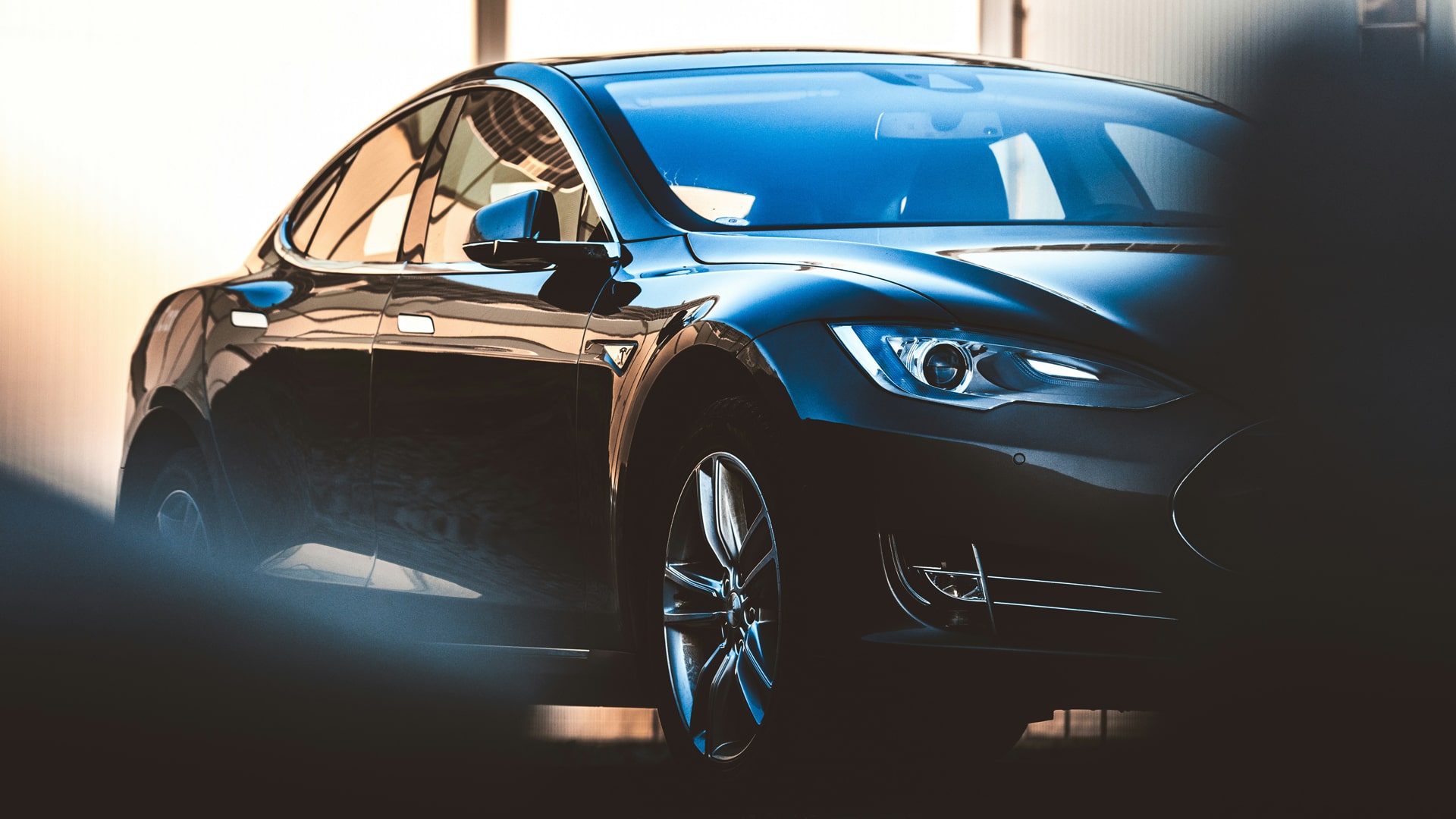“So this is how battery cells are made.”
At the end of 2018, a procurement officer from a European battery company was visiting a factory of a Chinese equipment supplier. Upon seeing the winding machine in action, he couldn’t help but marvel.
Even more amazed were the employees of the supplier, who discovered that Europe’s battery manufacturing practices were still largely manual and had yet to embrace automated production lines.
In contrast to China’s manufacturing practices, European manufacturing has long been renowned for its advanced, refined, and highly automated processes. Yet, in the world of battery production, the situation was entirely reversed.
The battery company was none other than Northvolt, a firm once heralded as Europe’s answer to Contemporary Amperex Technology (CATL). Yet, even as Northvolt’s first factory was being constructed, the company had little grasp of the intricacies of battery manufacturing.
When BMW prepared to inspect the facility, Northvolt’s production equipment hadn’t even been debugged. Northvolt’s founder, Tesla veteran Peter Carlsson, reportedly grew anxious. Drawing on his Tesla experience, he attempted to emulate Elon Musk’s famously bold production style. Carlsson set up tents in the factory to signal that employees were working around the clock to meet the deadline, pleading with BMW for more time.
But there was a critical difference: where Musk was known for tackling challenges head-on, Carlsson’s approach, according to insiders, was more about concealment than resolution:
“Once BMW’s team left, the tents were also taken down. This kind of scenario happened more than once.”
Northvolt, once Europe’s brightest star in battery manufacturing, raised a staggering USD 15 billion across 14 funding rounds—an amount that, in China, could finance as many as five second-tier battery manufacturers. Backers included giants like Goldman Sachs, BlackRock, Volkswagen, and BMW, who pinned their hopes on Northvolt to revitalize Europe’s battery industry and position the region as a serious competitor against China, Japan, and South Korea.
But the cracks eventually showed. After eight years of turmoil, Northvolt officially filed for bankruptcy protection in November.
Northvolt’s motto, which still appears on its website, reads: “The real challenge is to do it right and do it fast.” This slogan suggests that the company was founded with genuine ambition, not merely to profit. Yet, Northvolt’s failure lies in its hubris: its goal was to surpass established practices rather than learn from them. In the end, this mindset proved to be its undoing.

Right time, right place, but the wrong people
2016 was a golden moment for startups to enter the power battery industry.
At the beginning of the year, CATL launched its Series A funding round, raising RMB 3 billion (USD 420 million) at a valuation of approximately RMB 20 billion (USD 2.8 billion). Meanwhile, BYD introduced its pure electric vehicle model, the E5, and Tesla had just unveiled the Model 3. The global EV industry stood on the brink of a new era.
It was during this pivotal time that Carlsson, Tesla’s former vice president, returned from the US to his hometown in Sweden to establish Northvolt.
With Carlsson’s impressive background, Northvolt was, metaphorically speaking, born with a silver spoon. European governments and automakers were determined to maintain their dominance in the new energy era. Power batteries, considered the “heart” of electric vehicles, naturally became a key focus of their policy support and investments.
In 2016, Northvolt became the beneficiary of a perfect storm of favorable timing, European governmental backing, and the star power of a former Tesla executive. With the foundations for success seemingly in place, the company drew an outpouring of attention and support.
Volkswagen placed a USD 14 billion, ten-year order, while BMW, Volvo, and other automakers eagerly lined up to partner with Northvolt. Financial giants such as Goldman Sachs and BlackRock queued up to invest, adding further fuel to Northvolt’s ambitious plans. Brimming with confidence, the company set a bold target: achieving 150 gigawatt-hours of production capacity by 2030, with aspirations of capturing a quarter of Europe’s EV battery market.
Yet, beneath these grand ambitions, Northvolt was little more than a house of cards.
The company’s first factory was located in Skelleftea, a small Swedish town near the Arctic Circle, at an even higher latitude than Mohe in China. This remote, frigid location would become the stage for Northvolt’s unusual and turbulent trajectory.

Northvolt initially partnered with a Chinese equipment supplier based in Wuxi, which dispatched hundreds of workers to Europe to support the company’s expansion plans. However, the supplier was stunned to discover that Northvolt was stockpiling procured equipment in warehouses without initiating production.
In 2019, Northvolt commissioned Europe’s first custom cylindrical battery production line. Yet when the equipment arrived at the factory, it sat idle due to a lack of raw materials. “The equipment was powered on once and then left in the warehouse untouched until 2022,” a source revealed.
While Chinese suppliers were eager to work overtime to meet deadlines, Northvolt adhered to a typical European work schedule, clocking out at the end of the day. This cultural divide caused severe project delays:
“The Chinese staff stationed onsite often worked only half a day a week. The rest of the time, there was nothing to do.”
Even more surprising was Northvolt’s decision to hire PhD holders for roles typically filled by vocational school or even high school graduates in China—a mismatch that highlighted inefficiencies within the company’s workforce structure.
As Northvolt deepened its reliance on Chinese suppliers, the situation grew increasingly chaotic. One insider described the workshop at Skellefteå as “a catastrophic scene that was torture for everyone involved.”
Initially, the workshop hosted engineers from China, Japan, and South Korea, all with prior experience in the battery industry. “No matter their individual skill level, at least they’d seen how batteries were made,” the source noted.
However, most of these engineers eventually left. Those who remained became a management headache, exacerbating collaboration issues. Meetings frequently stalled as discussions centered around requests for schematics and source code rather than problem-solving, a source told 36Kr.
Communication among the multinational team proved another significant hurdle. Experienced Chinese engineers often struggled with English, and translation software failed to bridge the gap. The abundance of technical terms led to inaccurate interpretations. Engineers from other countries, unfamiliar with the basics of battery production, misunderstood the translated content, creating further confusion. As a result, Northvolt never managed to grasp the intricacies of battery manufacturing.
Compounding the chaos was the issue of material losses.
Battery production equipment relies on precision-machined parts, which Europe initially lacked. These components had to be airlifted from China.
“These parts were essentially heavy chunks of metal. After Northvolt signed for them, some would immediately go missing onsite. On a good day, 30% of the shipment was lost. At worst, half would vanish, with no one knowing where they went. They’d order replacements, only for the same thing to happen again,” the source said.
While logistical and operational inefficiencies might have been resolved through better management, Northvolt’s most critical issue lay in its fundamentally flawed battery design, a problem that no amount of process improvements could fix.
Can Europe make better batteries than China?
Northvolt entered the battery manufacturing industry without any expertise but with a sense of hubris.
In standard battery production, the cell manufacturer defines the process parameters, while the equipment supplier designs machines to meet those specifications. However, Northvolt’s cell designs were entirely misaligned with established manufacturing capabilities.
An engineer who toured Northvolt’s workshop recounted one glaring example: during the slitting process, Northvolt insisted on a precision parameter of 0.1 millimeters, despite the fact that slitting machines are physically limited to achieving 0.5 mm at best.
Nevertheless, Northvolt remained adamant that its unrealistic requirement would yield superior results and demanded that the equipment be upgraded accordingly. When the machines inevitably failed to meet these demands, the consequence was catastrophic: an overwhelming volume of defective batteries. “80% of the batteries produced were scrap, but they kept manufacturing anyway,” the engineer said.
Northvolt refused to revise its requirements, operating under the belief that European manufacturers could inherently achieve better results. The company’s workforce, composed largely of highly educated individuals, frequently proposed ideas they believed to be innovative but were often impractical.
For instance, Northvolt engineers argued that the camera configurations on the production line were inadequate and insisted on replacing them with more advanced models. However, once the new cameras were installed, the performance worsened. The production line, designed as a finely tuned integrated system by Chinese suppliers, was thrown into disarray by the change. Ultimately, Northvolt had to request that the suppliers restore the machines to their original state.
“These kinds of incidents happened frequently and repeatedly,” said a source familiar with the operations.
A professional with extensive experience working with European companies offered insight into the mindset behind such decisions: “Europeans don’t perceive their battery industry as weak. They believe they just haven’t tried yet, and if they did, they would undoubtedly do better.”
This mindset proved to be the root of Northvolt’s troubles. Instead of adopting proven solutions, the company attempted to innovate its manufacturing processes despite its lack of experience.
Initially, Chinese engineers supporting Northvolt’s operations were issued only tourist visas, requiring them to rotate out every three months. The situation worsened during the Covid-19 pandemic, when travel to Sweden became impossible. In response, Northvolt suggested that the Chinese suppliers’ staff meet them in Dubai instead.
“It seemed like they weren’t really trying to coordinate but were just looking for an excuse to vacation in Dubai,” one source said.
Without the presence of Chinese engineers onsite, Northvolt struggled to operate its machinery effectively.
Take the coating process, for example. While most Chinese battery manufacturers could produce electrode sheets with a mirror-like smoothness, Northvolt’s sheets were riddled with defects. “A ten-meter-long electrode strip could have seven or eight large holes. In a company like CATL, this would warrant a detailed, multipage report,” an industry insider claimed.
To its credit, Northvolt did write reports documenting these issues, identifying causes, and proposing solutions. However, the reports were often shelved and forgotten.
“Eventually, they stopped even going to the factory floor. They stayed in the office writing beautifully crafted PowerPoint presentations. These presentations outlined every issue, potential solution, and future preventive measures in meticulous detail. Anyone reading them would have been impressed,” the source said.
But PowerPoint presentations do not fix manufacturing problems. The core issue persisted: Northvolt’s battery process parameters were flawed from the very beginning. And when the first step is wrong, no number of subsequent steps can correct it.
An individual who worked with Northvolt highlighted the company’s misplaced priorities:
“The company seemed obsessed with the appearance and dimensions of its battery casings, aiming to make them more aesthetically pleasing than anyone else’s. Chinese battery manufacturers—or any battery manufacturer—focus on the chemistry and performance of their batteries.”
“We can raise a factory’s battery yield to 96% in just four months. Northvolt took four years and only achieved 70%,” said a Chinese executive after a recent interaction with Northvolt.
By 2022, despite holding USD 30 billion in orders, Northvolt still hadn’t achieved large-scale battery production. The situation remained unchanged in 2023.
In June 2024, BMW finally ran out of patience and canceled its USD 2 billion battery contract. Five months later, Northvolt declared bankruptcy.
As of December 2023, Northvolt’s battery production capacity was a mere 0.5% of its original target. The once-perfect market timing was squandered by endless delays, and Europe’s supportive policies gave way to eroded patience. Under the leadership of a Tesla veteran, Northvolt’s lofty ambitions ultimately led to its downfall.
Robin Zeng, chairman of CATL, once publicly questioned why Europe still struggles to produce high-quality batteries. Northvolt’s failure suggests that poor designs, processes, and production methods are key contributors. One could argue that intentions, positions, and attitudes must also be factored in.
Europe is not inherently incapable of producing batteries. In fact, the VDA standard battery cell, widely adopted today, was originally developed to European specifications, positioning Europe as an early benchmark setter.
Europe’s top three automakers—Volkswagen, BMW, and Mercedes-Benz—have all played pivotal roles in developing China’s power battery industry. Volkswagen invested in Gotion High-tech, BMW indirectly supported CATL, and Mercedes-Benz, as a major shareholder, helped Farasis Energy establish its product quality system.
However, while European companies excel in R&D, they often struggle with implementation and are slow to embrace change. Their mature manufacturing systems, once a symbol of precision and reliability, now appear rigid and resistant to reinvention.
Chinese battery companies, by contrast, relied initially on rapid replication and learning capabilities to quickly establish a robust battery supply chain. As the EV market boomed, they leveraged large-scale market applications to innovate and iterate, transitioning from learners to leaders.
This dynamic extends to automakers as well. In China, a new car model that sustains peak popularity for over a year can already be considered a blockbuster. The development cycle for new cars has been shortened to around 12 months, compared to the 3–4 years typically required in Europe.
European manufacturing has long been synonymous with precision and superior quality. Historically, its deliberate pace ensured reliability, but in today’s fast-moving automotive industry, speed has become the ultimate competitive advantage. The rate of product iteration and sales volume now determines who emerges as the next industry powerhouse.
An individual with experience engaging European automaker CEOs said, “There’s a general sense of anxiety among these leaders. They want to accelerate innovation and break free from rigid traditions. But the power of one person is rarely enough to transform an entire organization from top to bottom.”
This reality extends beyond automakers to companies like Northvolt. Europe’s EV industry remains anchored in the manufacturing strengths it has cultivated since the Industrial Revolution, but its pace of change has fallen far behind the demands of the times. Falling behind in today’s environment can mean being left behind entirely without timely intervention.
To compete, Europe’s tradition of excellence is no longer sufficient. It must adapt to a world that moves faster than ever.
KrASIA Connection features translated and adapted content that was originally published by 36Kr. This article was written by Han Yongchang for 36Kr.

